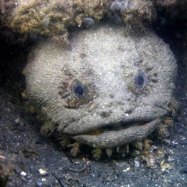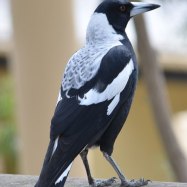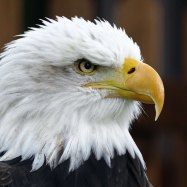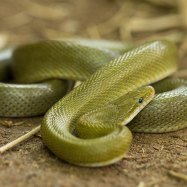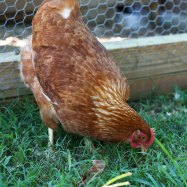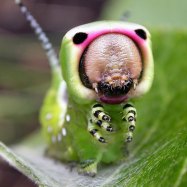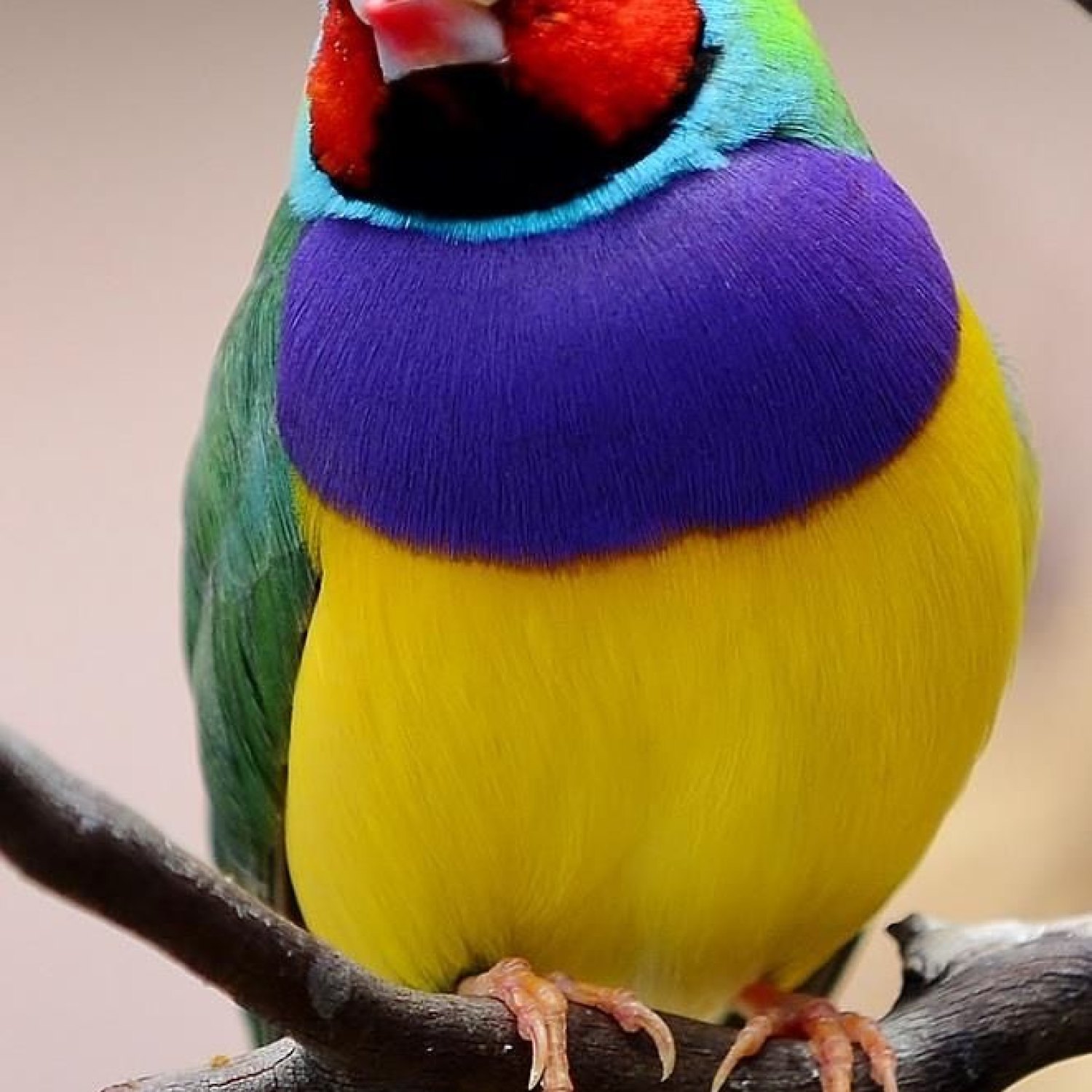
Gouldian Finch
12-14 cm
The Gouldian Finch is a small and compact bird, measuring 12-14 cm, and is found in Northern Australia. Belonging to the family Estrildidae, it is a popular and colorful pet bird for bird enthusiasts. Its vibrant colors and cheerful chirps make it a great addition to any aviary. #GouldianFinch #NorthernAustralia #Estrildidae
Animal Details Summary:
Common Name: Gouldian Finch
Kingdom: Animalia
Habitat: Savannah grasslands, open woodlands
The Beautiful and Mysterious Gouldian Finch
Imagine walking through the open woodlands of northern Australia, surrounded by the vibrant colors of nature. As you make your way through the tall grasses, you hear a distinct and cheerful chirping sound. As you follow the sound, you come across a small and compact bird with a bright array of colorful feathers. This is the Gouldian finch, also known as Erythrura gouldiae Gouldian Finch.The Gouldian finch is a small passerine bird, found only in northern Australia. It belongs to the Estrildidae family and is part of the Order Passeriformes, which includes over half of all bird species. Despite its small size, this little bird stands out among its peers due to its strikingly colorful plumage.
The Habitat of the Gouldian Finch
The Savanna grasslands and open woodlands of northern Australia are home to the Gouldian finch. These birds prefer to live in wooded areas with dense shrubbery, where they can find ample food and shelter. They are also found in the tropical grasslands and savannas of the region, where they build their nests in hollowed-out tree branches or termite mounds.The Diet of the Gouldian Finch
The Gouldian finch is a granivorous bird, meaning they primarily feed on seeds. These birds have a unique feeding method where they hold onto their food with their feet, using their beak to crack open the seed. They also feed on insects and their larvae during mating season, providing essential protein for growth and reproduction Grass Carp.In their natural habitat, Gouldian finches feed on a variety of grass, herb, and shrub seeds, including thistle, millet, and rice. In captivity, they require a diet rich in proteins, vitamins, and minerals to maintain their vibrant plumage and overall health.
The Colorful World of the Gouldian Finch
The Gouldian finch's most striking feature is its brightly colored plumage, making them one of the most beautiful birds in the world. They come in three main color variations: red, yellow, and black, each with its own unique color combination. The red-headed variety is the most common, with a bright red face, a green back, and a yellow underbelly. The black-headed variety has a black head and back, with a red or orange belly. The yellow-headed variety has a bright yellow head and chest, with a green back.One interesting fact about the Gouldian finch is that its coloration is divided vertically, with the colors on one side of the body being different from the other. This makes them look like two different birds when viewed from either side, adding to their mysterious charm.
The Origin of the Gouldian Finch
As the name suggests, the Gouldian finch is named after the iconic ornithologist John Gould, who discovered and described them in the 19th century. However, indigenous Australians, who have lived in the Northern Territory for thousands of years, have always known and revered these colorful birds.The Gouldian finch is endemic to Australia, meaning it is found only in this country and nowhere else in the world. These birds can be found in the Kimberley region of Western Australia, as well as parts of Northern Territory and Queensland.
The Anatomy of a Gouldian Finch
The Gouldian finch has a small and compact body measuring only 12-14 centimeters in length. They weigh between 10-17 grams, making them one of the lightest bird species in the world. Despite their small size, they have a distinctive, chunky shape, with a short, conical beak.The compact body of the Gouldian finch, along with its short wings and tail, allows it to navigate through dense shrubbery with ease. This helps them to evade predators and find shelter during extreme weather conditions.
The Mysteries of Coloration
One of the most intriguing aspects of the Gouldian finch is its colorful plumage. But what is the purpose of these vibrant colors? For many years, ornithologists believed that birds' coloration was for attracting a mate or to signal their fitness to potential predators. However, recent research suggests that the coloration of the Gouldian finch may serve as a form of social signaling.In captivity, Gouldian finches have been observed changing their coloration to adapt to their surroundings. For example, when placed in a cage with only birds of the same color variety, they will molt and change their color pattern to match that of their peers. This leads researchers to believe that these birds use their colors to communicate and identify with their social group.
The Threat of Extinction
Unfortunately, the Gouldian finch is listed as an endangered species due to habitat loss and illegal poaching for the pet trade. The decrease in its wild population has led to inbreeding and genetic issues, causing a decline in their overall health and ability to adapt to their surroundings.There are conservation efforts being made to save these beautiful birds, such as captive breeding programs and habitat restoration projects. It is essential to raise awareness about their plight and take necessary steps to protect their habitats and prevent further decline in their numbers.
In Conclusion
The Gouldian finch may be small in size, but it has captured the hearts of bird enthusiasts and researchers alike with its striking beauty and mysterious behavior. From their colorful plumage to their unique social dynamics, these birds continue to intrigue and captivate us, making them a treasured part of Australia's natural heritage.It is our responsibility to ensure that these magnificent birds are protected and conserved for future generations to admire and appreciate. So, the next time you encounter a Gouldian finch in the wild, take a moment to appreciate its vibrant colors and the wonder of nature that surrounds us.

Gouldian Finch
Animal Details Gouldian Finch - Scientific Name: Erythrura gouldiae
- Category: Animals G
- Scientific Name: Erythrura gouldiae
- Common Name: Gouldian Finch
- Kingdom: Animalia
- Phylum: Chordata
- Class: Aves
- Order: Passeriformes
- Family: Estrildidae
- Habitat: Savannah grasslands, open woodlands
- Feeding Method: Granivorous
- Geographical Distribution: Northern Australia
- Country of Origin: Australia
- Location: Northern Australia
- Animal Coloration: Brightly colored - Red, yellow, black, green and blue
- Body Shape: Small and compact
- Length: 12-14 cm
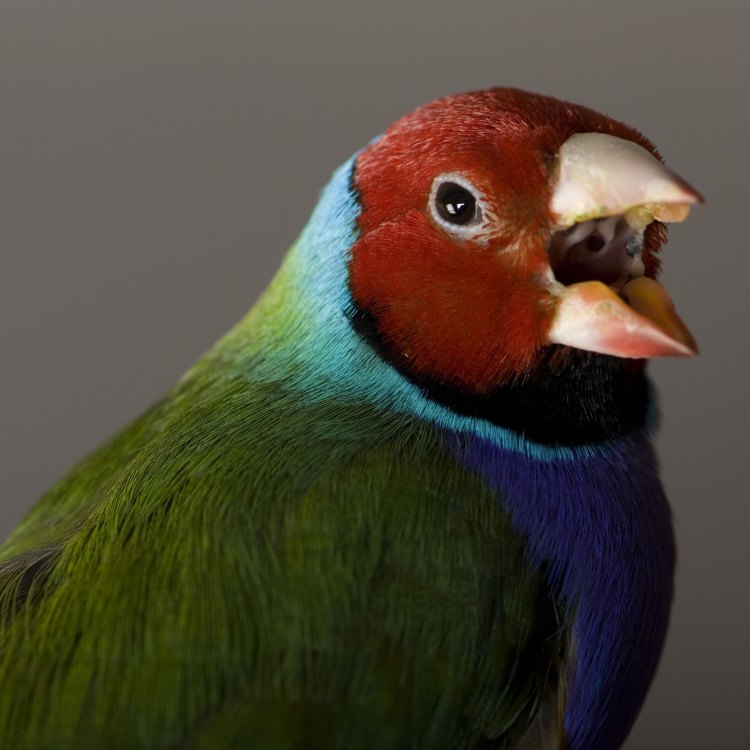
Gouldian Finch
- Adult Size: Small
- Average Lifespan: 6-8 years
- Reproduction: Egg-laying
- Reproductive Behavior: Polygynous
- Sound or Call: Melodious and musical song
- Migration Pattern: Non-migratory
- Social Groups: Small flocks
- Behavior: Active during the day, social, highly active and agile
- Threats: Habitat loss and degradation, predation by cats and other animals
- Conservation Status: Near Threatened
- Impact on Ecosystem: Seed dispersal
- Human Use: Popular pet bird
- Distinctive Features: Colorful plumage, different color variations in males and females
- Interesting Facts: One of the most colorful bird species in the world, males are more colorful than females
- Predator: Cats, snakes, birds of prey
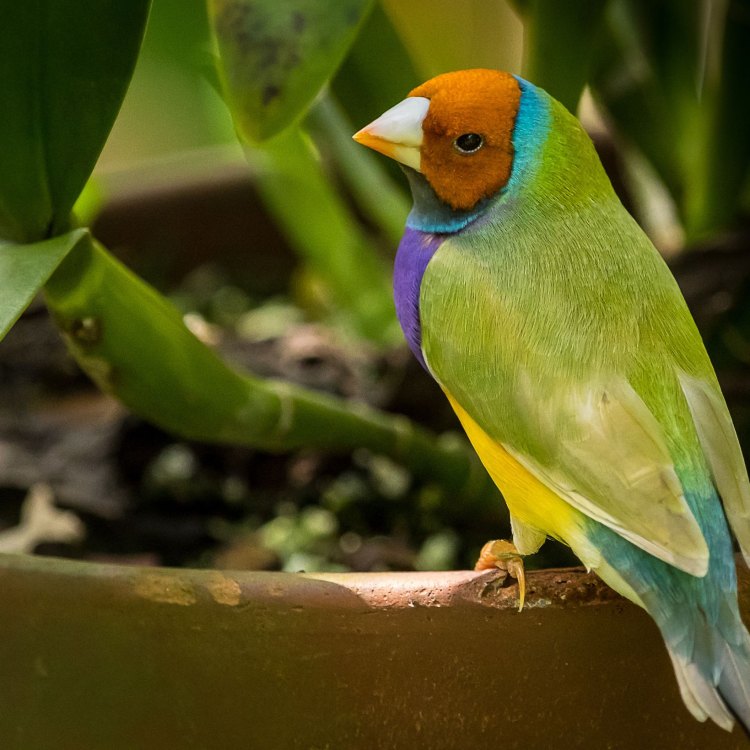
Erythrura gouldiae
The Vibrant and Social Gouldian Finch: A Colorful and Melodious Jewel of the Avian World
The world of birds is full of beauty and diversity, with each species bringing its unique set of characteristics and traits. One such species is the Gouldian Finch, also known as Lady Gouldian or Rainbow Finch, which stands out among its feathered counterparts with its strikingly colorful plumage and enchanting song. But beyond its aesthetic appeal, the Gouldian Finch has much more to offer, making it a fascinating and important part of the ecosystem.Size and Lifespan
The Gouldian Finch is a small bird, measuring around 4 PeaceOfAnimals.Com.7-5.1 inches in length and weighing only about half an ounce. It belongs to the family Estrildidae, which includes finches, waxbills, and munias. In terms of lifespan, these little birds have an average lifespan of 6-8 years, making them relatively short-lived compared to other bird species.Reproduction and Behavior
Like most birds, the Gouldian Finch species follows the traditional process of egg-laying for reproduction. However, what makes this species unique is its polygynous reproductive behavior, where a male mates with multiple females in a breeding season. This behavior is essential for the survival of the species, as it helps maintain genetic diversity and increases the chances of successful reproduction.The Gouldian Finches are highly social birds and form small flocks in their natural habitat. They are diurnal, meaning they are active during the day, and highly active and agile creatures Groenendael. They are known to engage in various social behaviors, such as preening, feeding, and singing, among others. Their melodious and musical song is a delight to the ears and is an essential part of their behavior, often used to attract mates or establish territory.
Distinctive Features and Color Variations
One of the most distinctive features of the Gouldian Finch is its colorful plumage, which has earned it the title of being one of the most vibrant bird species in the world. The males are more brightly colored than females, which is the opposite of most bird species where females are more dull in appearance. The males have a combination of bright colors, including green, yellow, red, and purple, making them a visual treat to behold. On the other hand, female Gouldian Finches have a more subdued color palette with a combination of green, blue, and black. This difference in coloration helps in distinguishing between males and females, making it easier for them to find potential mates.It is interesting to note that the different color variations in males and females are not fixed. The colors of both males and females can vary depending on environmental factors such as nutrition and habitat. This phenomenon is known as color polymorphism and is common among many bird species.
Habitat and Migration Pattern
Gouldian Finches are endemic to northern Australia, where they inhabit open grasslands, woodlands, and savannas. They are considered non-migratory birds, meaning they do not travel long distances during seasonal changes. Instead, they stay in their preferred habitat throughout the year. However, they do make short-distance movements within their range in search of food and water sources.Threats and Conservation Status
Despite being a stunning and social species, the Gouldian Finch faces numerous threats in its natural habitat. The primary threat is habitat loss and degradation due to human activities, such as land clearing for agriculture and urbanization. These activities have resulted in a significant decline in their population, leading to their classification as Near Threatened by the International Union for Conservation of Nature (IUCN).Another threat to these birds is predation by cats and other animals. Due to their small size and lack of defense mechanisms, the Gouldian Finch is an easy target for predators. This threat is exacerbated by the fragmentation of their habitat, which makes it easier for predators to access their nesting areas.
Impact on Ecosystem and Human Use
The Gouldian Finch plays a crucial role in the ecosystem as seed dispersers. Being small birds, they feed on various grass and plant seeds, which they spread through their droppings, allowing for the growth and survival of different plant species. This process is vital for maintaining the balance of plant life in their habitat.Apart from their ecological significance, the Gouldian Finch is also a popular pet bird. Their colorful appearance, playful nature, and beautiful song make them a favorite among bird enthusiasts. However, their capture and trade for the pet industry have also contributed to the decline in their population.
Predators and Interesting Facts
The Gouldian Finch faces threats from a variety of predators, including cats, snakes, and birds of prey. These predators often target their offspring or weak and injured adults, making nesting and breeding a risky business for the Gouldian Finches.It is also worth mentioning some interesting facts about this colorful species. The Gouldian Finch is named after English ornithologist John Gould, who first described the species. They are also called Rainbow Finches due to their vibrant coloration. And despite their short lifespan, these birds are known to have a remarkable energy and can fly up to 10,000 kilometers in their lifetime.
In Conclusion
The Gouldian Finch is not just a beautiful and melodic bird, but also a vital part of the ecosystem. Unfortunately, their population is rapidly declining due to various threats, making their conservation efforts crucial for their survival. As responsible individuals, it is essential to understand and appreciate the irreplaceable role that these birds play in the environment and take necessary steps to protect and preserve their habitat. After all, the vibrant and social Gouldian Finch is a true jewel of the avian world and deserves all the love and appreciation it can get.
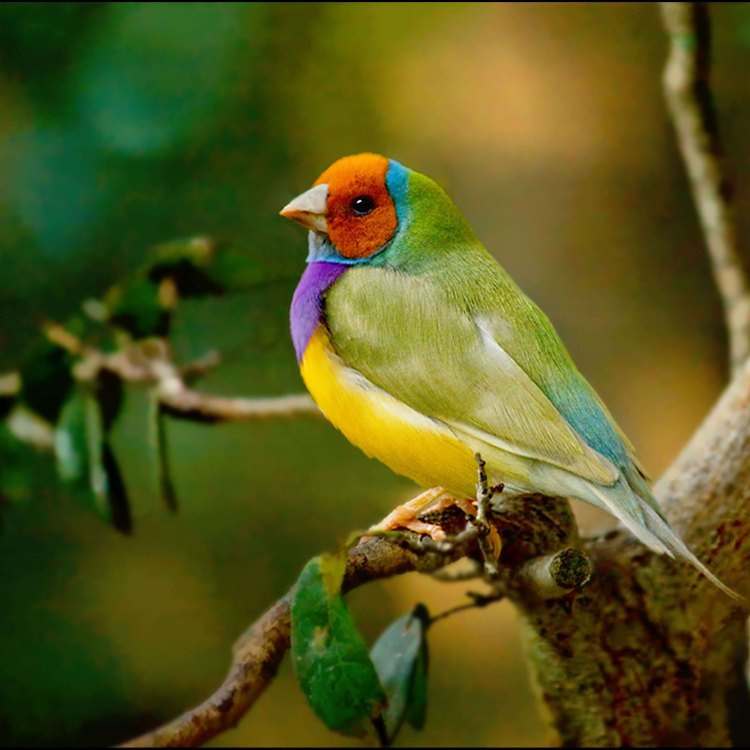
The Beautiful and Mysterious Gouldian Finch
Disclaimer: The content provided is for informational purposes only. We cannot guarantee the accuracy of the information on this page 100%. All information provided here may change without prior notice.


